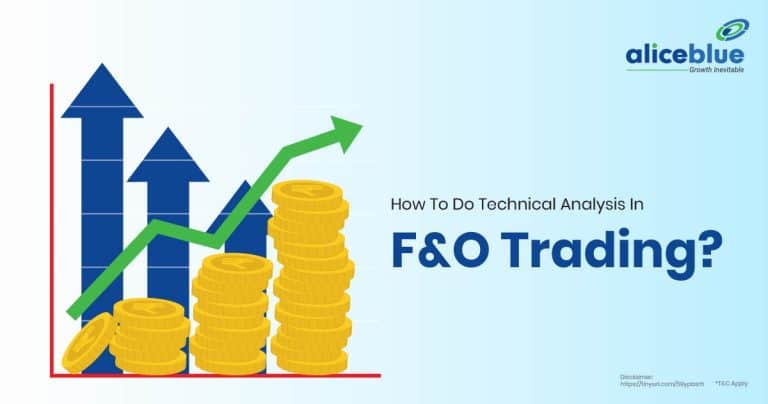A trailing stop loss is a dynamic form of stop loss order that adjusts automatically with the market price of an asset. It’s set at a percentage below the market price and moves up as the price increases, but stays fixed if the price falls.
Table of Contents
What Is Trailing Stop Loss?
A trailing stop loss is a risk management tool in trading. Set in rupees, it trails the market price by a specified amount. As the price rises, the stop loss moves up, locking in profits, but remains stationary if the price falls, minimizing potential losses.
A trailing stop loss is set a certain number of rupees below the market price. As the asset’s price climbs, the stop loss increases proportionally, but if the price drops, the stop loss remains unchanged.
This tool helps lock in profits while minimizing potential losses. For example, if the price falls to the trailing stop loss level, the position is automatically sold, preventing further losses while capitalizing on upward trends.
For example: For instance, if a stock is bought at Rs 100 and a 10% trailing stop loss is set, the sell order activates if the price drops to Rs 90. If the stock rises to Rs 120, the new stop loss becomes Rs 108.

Trailing Stop Loss Example
In a trailing stop loss example, imagine you buy a stock at ₹100 and set a 10% trailing stop loss. As the stock price rises to ₹120, the trailing stop moves up to ₹108 (10% below ₹120). If the stock price then falls to ₹108, the stop loss triggers, selling your stock to secure profits.
However, if the stock continues rising, the trailing stop keeps adjusting upward, allowing further profit capture while limiting potential losses. This strategy locks in gains as prices climb while automatically protecting against downturns.
Features of Trailing Stop Loss
The main feature of a trailing stop loss is its dynamic adjustment with price movements, locking in profits as prices rise while limiting losses if prices fall. It provides flexibility, automatically setting new stop levels as the asset’s price advances.
- Dynamic Adjustment: Trailing stop loss adjusts with upward price movements, securing gains while protecting from downside risks. As prices rise, the stop-loss level moves up, locking in additional profits.
- Profit Protection: It allows investors to capture profits in rising markets by automatically setting new stop levels, ensuring gains are preserved if prices reverse, making it ideal for volatile markets.
- Automatic Execution: Trailing stops are automated, so adjustments happen without manual intervention. This feature ensures timely reactions to price changes, maintaining discipline in trading strategies.
- Loss Limitation: While it secures profits in upward trends, a trailing stop also limits losses in falling markets, providing a balanced approach to risk management and enhancing overall portfolio stability.
How Does A Trailing Stop Loss Work?
A trailing stop loss automatically adjusts higher as the price moves in a favourable direction, maintaining a fixed distance or percentage from the current price while protecting profits. It moves only upward in long positions, never downward.
This dynamic protection allows profits to run while providing an exit mechanism when the trend reverses. For example, a 5% trailing stop on stock bought at ₹100 adjusts upward as the price rises.
Professional traders customize trailing distances based on volatility and timeframe. Wider trails suit longer-term trades, while tighter trails protect short-term gains but risk premature exits.
Difference Between Stop Loss And Trailing Stop Loss
The main difference is that a stop loss is a fixed order set at a specific price to limit losses, while a trailing stop loss automatically adjusts with price changes, maintaining a set distance below the market price to secure gains and reduce potential losses.
| Feature | Stop Loss | Trailing Stop Loss |
| Definition | A set price at which a security is automatically sold to limit losses. | An adjustable stop loss that moves with the market price. |
| Price Adjustment | Fixed; does not change with market movements. | Dynamic; adjusts with the market price, maintaining a set distance. |
| Purpose | To limit potential losses by selling at a predetermined price. | To secure gains and limit losses by adjusting to price movements. |
| Flexibility | Less flexible, as it needs manual resetting to adjust to market changes. | More flexible, automatically adjusting to protect profits. |
| Risk Management | Effective in stable markets. | More effective in volatile or upward-trending markets. |
Advantages of Trailing Stop Loss
The main advantages of a trailing stop loss are its ability to lock in profits while minimizing losses, adapt to market movements, provide disciplined trading by removing emotion and automatically adjust to secure gains without constant monitoring, making it ideal for volatile markets.
- Locks in Profits: A trailing stop loss moves up with the rising market price, locking in profits. When the market price increases, the stop loss level also rises, ensuring that gains are secured if the market reverses.
- Minimizes Losses: By setting a trailing stop loss, investors can limit their potential losses. The stop loss remains static if the price falls, ensuring that the trade is exited before significant losses occur and providing a safety net.
- Adapts to Market Movements: This tool dynamically adjusts to changing market conditions. It allows investors to benefit from positive trends without needing to manually reset the stop loss, making it highly effective in volatile markets.
- Promotes Disciplined Trading: Trailing stop losses helps in removing emotional decision-making from trading. It enforces a disciplined approach where decisions are based on pre-set rules rather than gut feelings or market rumours.
- Requires Less Monitoring: Once set, a trailing stop loss automatically adjusts. This feature is particularly beneficial for investors who cannot constantly monitor the market, as it manages the risk and protects gains without the need for continuous oversight.
Disadvantages Of Trailing Stop Loss
The main disadvantages of a trailing stop loss include the potential for premature exits during normal market fluctuations, the need for a carefully chosen distance to avoid unnecessary triggers and the possibility of missing out on future gains if the asset rebounds after selling.
- Risk of Premature Exit: Trailing stop losses can lead to an early exit from a position during normal market volatility. Small price fluctuations might trigger the stop loss, selling the asset before it potentially recovers, leading to missed opportunities for higher gains.
- Choosing the Right Distance is Crucial: Setting the correct distance for the trailing stop loss is challenging. If set too close to the market price, it might trigger too often; if too far, it may not effectively protect gains.
- Potential Missed Future Gains: Once a trailing stop loss triggers a sell, investors might miss out on future gains if the market price rebounds. This can be particularly frustrating in markets that are prone to quick recoveries after short downturns.
- Not Ideal in Highly Volatile Markets: In markets with high volatility, trailing stop losses can be less effective, as they might get triggered frequently due to large price swings, leading to repeated exits and entries which can erode potential profits.
Best Trailing Stop Loss Strategy
An effective trailing stop strategy combines market volatility analysis, position time frame and risk tolerance to set optimal trailing distance. Shorter-term traders use tighter trails while longer positions allow broader price movement.
Implementation requires understanding the Average True Range (ATR) for volatility-based trials. Multiple time frame analysis helps identify trend strength and potential reversal points for stop adjustments.
Risk management includes position sizing relative to trail width and avoiding too-tight stops in volatile markets. Some traders use multiple trails, partial exits, or parabolic SAR for sophisticated protection.
To understand the topic and get more information, please read the related stock market articles below.
Trailing Stop Loss Meaning – Quick Summary
- A trailing stop loss is a trading tool set below the market price. It moves up as the price rises, locking in profits, but stays stationary if the price falls, limiting potential losses.
- In a trailing stop loss example, a 10% trailing stop on ₹100 stock rises as the price goes up. When the price drops to the stop level, the stock sells automatically, securing gains and limiting losses.
- The main feature of a trailing stop loss is its dynamic adjustment with price movements, securing gains as prices rise while limiting losses if prices fall and offering flexible and automatic stop levels.
- A trailing stop loss dynamically adjusts upward with favourable price moves, protecting profits and automatically exiting when the trend reverses. Customized trailing distances based on volatility and time frame suit professional trading strategies.
- The main difference is that a stop loss is fixed to limit losses, while a trailing stop loss adjusts with price changes, maintaining a set distance below the market price to secure gains and minimize losses.
- The main advantages of a trailing stop loss include profit-locking, loss-minimization, adaptability to market changes and emotion-free trading, making it ideal for volatile markets by adjusting automatically without constant monitoring.
- The main disadvantages of a trailing stop loss include premature exits in normal market fluctuations, careful distance selection to avoid unwanted triggers and missed gains if the asset rebounds after the stop triggers.
- Effective trailing stop strategies combine volatility analysis, position duration and risk tolerance to set optimal trailing distances. ATR-based volatility trails and multi-timeframe analysis improve trend detection and support strategic stop adjustments.
- Open a free demat account with Alice Blue in 15 minutes today! Invest in Stocks, Mutual Funds, Bonds & IPOs for Free. Also, trade at just ₹ 15/order and save 33.33% brokerage on every order.

What Is Trailing Stop Loss? – FAQs
A trailing stop loss is a dynamic risk management tool that automatically adjusts the stop level higher as the price moves favourably, protecting accumulated profits while maintaining a predetermined distance from the current market price.
Set trailing stop percentage or points below market price for long positions (above for shorts). Stop moves up automatically with price rises, maintaining fixed distance while protecting profits.
For percentage-based: Trailing Stop = Current Price × (1 – Trail%). For fixed points: Trailing Stop = Current Price – Fixed Points. Stops move only in a favourable direction.
Yes, trailing stops effectively balance profit protection with trend following. They prevent emotional decision-making and automatically lock gains while allowing additional upside in strong trends.
Yes, professionals commonly use trailing stops, often combining multiple trails or using ATR-based distances. They customize settings based on market volatility and trading timeframe.
Absolutely. Trailing stops provide automated profit protection, eliminate emotional exits and help maintain disciplined trading. They’re particularly valuable in trending markets and longer-term positions.
We hope that you are clear about the topic. But there is more to learn and explore when it comes to the stock market, commodity and hence we bring you the important topics and areas that you should know:
Disclaimer: The above article is written for educational purposes and the companies’ data mentioned in the article may change with respect to time. The securities quoted are exemplary and are not recommendatory.









